A River Runs Through It
Exploring Ethiopia's Remote Omo Valley.
By Shloka Nath.
The tribes of the Omo River Valley in South West Ethiopia run with death. They live in villages along the mighty river — their beings intertwined with its ebb and flow. When the Omo floods, she feeds their flood-recession crops, gives them fish and nourishes the grasslands for their cattle. Her dry spells bring scarcity and starvation to their hamlets that dot the dry savannas. This is Ethiopia, the southwest.
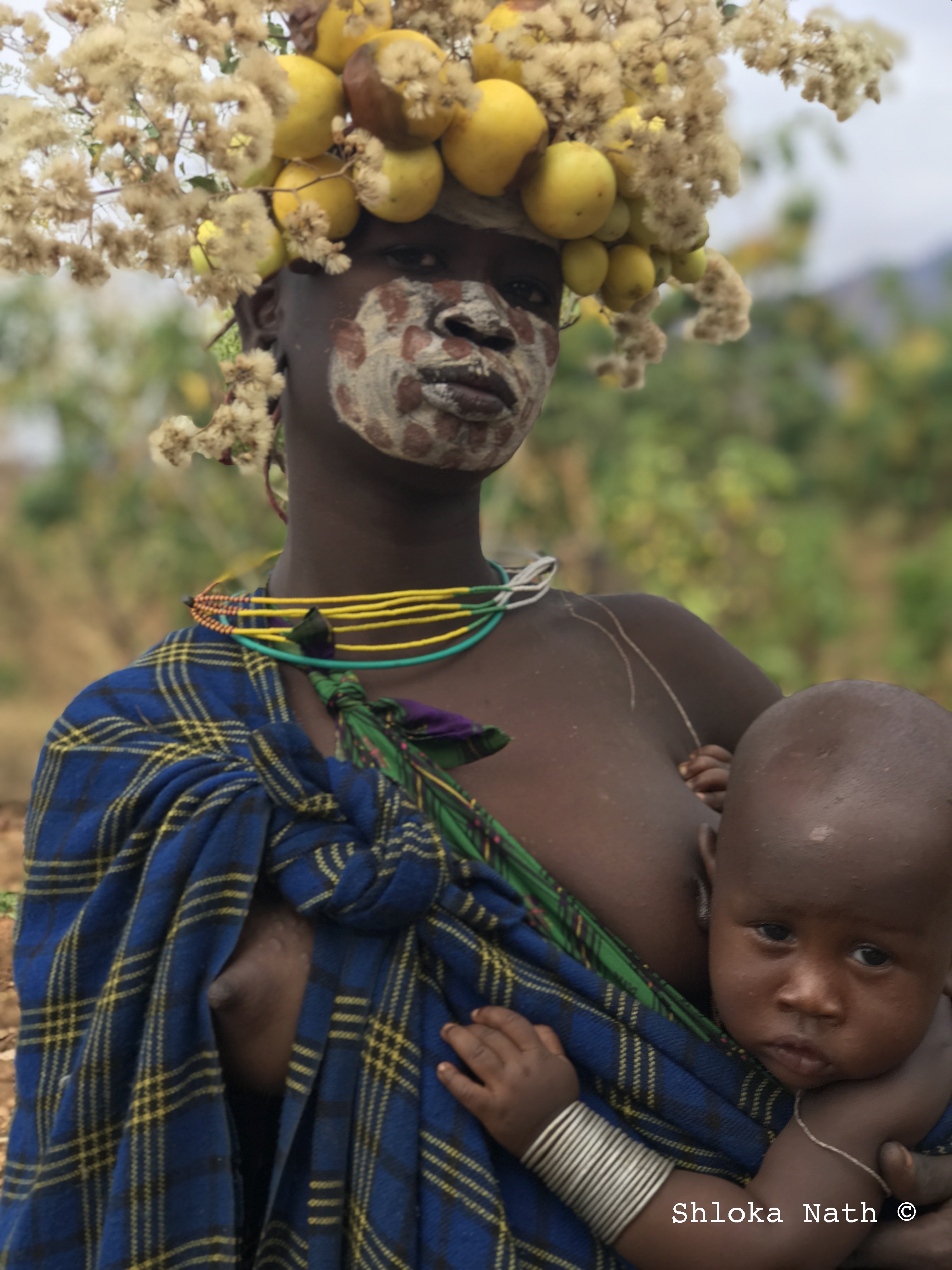
In as much as they contend with mortality, which is driven home by the developmental and political incursions of ‘modern civilisation’, the Omo people, subliminally emulate their river and surge towards life. It is an ancient pattern of survival tracing the course of these waters that cut a nearly 475-mile swath through the central highlands, finally emptying into the deep fissure that is the Jade Sea or Lake Turkana, on the Ethiopia-Kenya border.
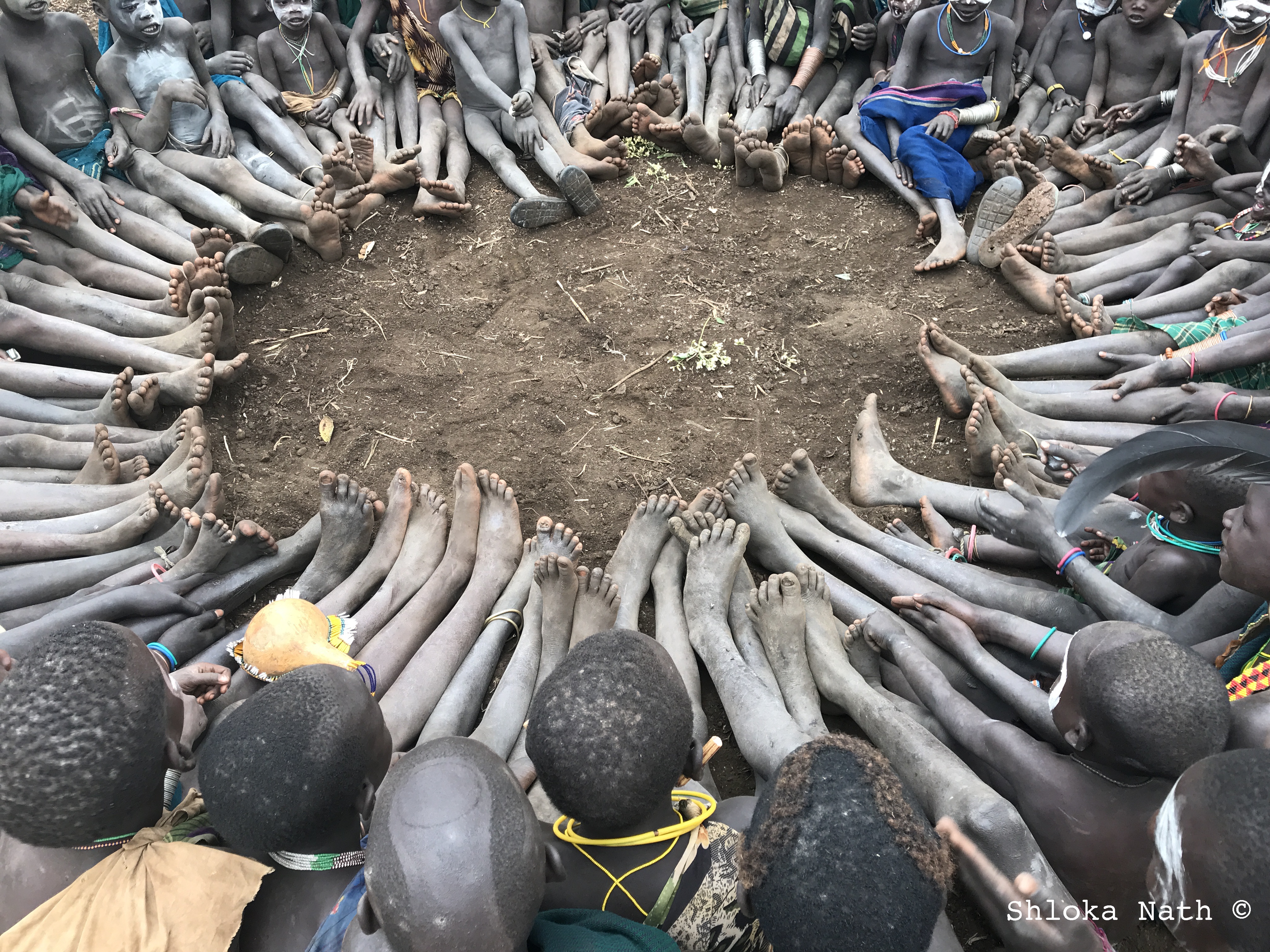
The discovery of human remains dating back nearly 2.5 million years prompted UNESCO to dub the Lower Valley a World Heritage site in 1980. If Africa is humanity’s womb, then the Omo Valley is its umbilical cord.
Home to a population of 2,00,000 from eight different prehistoric tribes — Bodi, Kwegu, Mursi, Suri, Daasanach, Karo, Kwegu and Nyangato, the Omo Valley is a marvel of evolution and civilisation. Nowhere else on the planet do so many genetically and linguistically diverse primordial people live in such a small area. It has been a crossroad for humans migrating in many directions, just shy of two millennia. Owning few items from the modern world, besides plastic jerry cans for carrying water, the Omo tribes are one of the world’s last frontiers that are, by and large, un-influenced by the mainstream.
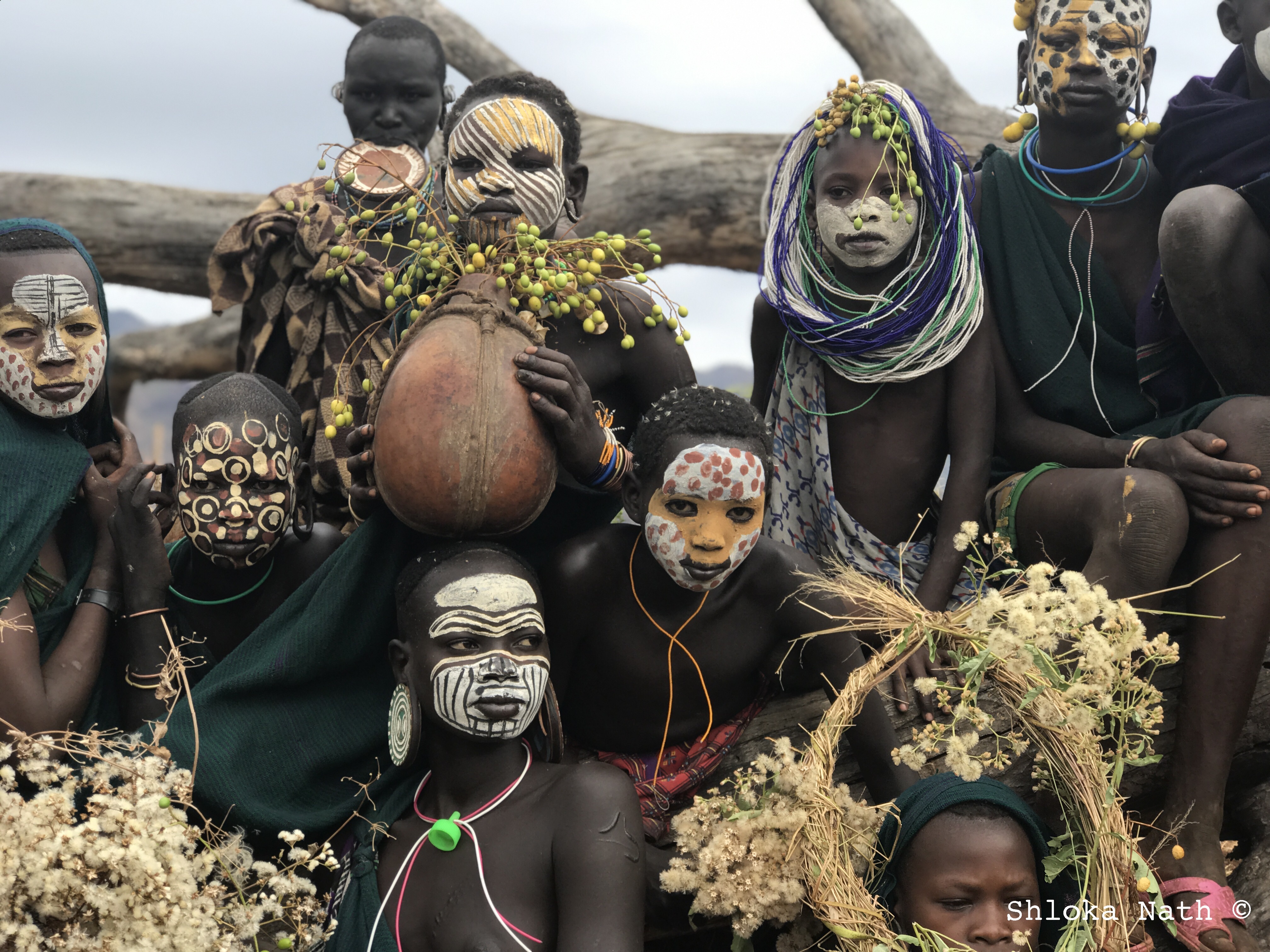
We flew from Nairobi to Ethiopia’s capital Addis Ababa and met our guide. From there it was a three-day drive, eight hours a day, to get to Kibish. The Upper Omo is remote and hard to navigate. It is not easy to photograph the tribes. They carry fully loaded automatic Kalashnikov 47s to guard their cattle from thieves and defend their lives in inter-tribal conflicts. Fights to protect one's tribe and honour persist, just as they did in ancient times. The guns are a legacy of the Sudanese Civil War that bloodied the land just across the border for decades, till an uneasy truce was reached at in 2005. By then, the gun culture had permeated deep; there is no deterring violence in this oil-rich region. A river of blood runs through it.
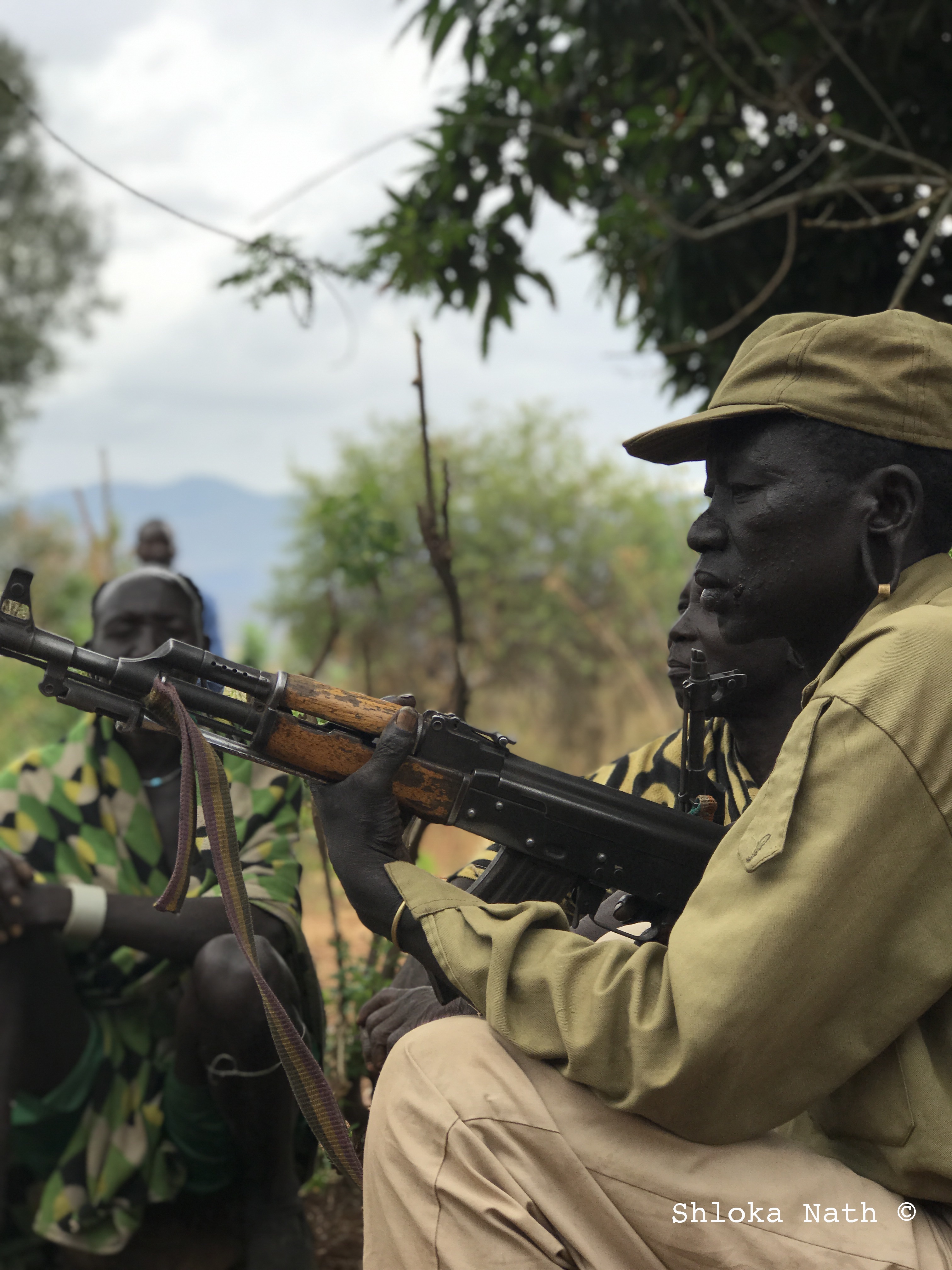
The Omo river and her people are one; as life and death are one, as the river and the sea is one. They believe that the waters carry it all — joy, longing, good, evil. If you open yourself to it, it shall flow right through you. You stop seeking. You learn to receive. For that is when you shall find.
Because the river runs through them, the Omo paint themselves in the colours of the river. They gather her belongings to adorn themselves in her splendour. They sculpt their hair with animal fat and clay, wear jewelry of beads, bone, and metal, and paint their entire bodies with white minerals from the riverbeds — black charcoal, and red and yellow ocher. They scarify limbs and torsos to designate beauty, status and tribal identity. These designs consist of small, raised scars created by rubbing charcoal in deliberately administered cuts, causing the skin to welt in intricate patterns.
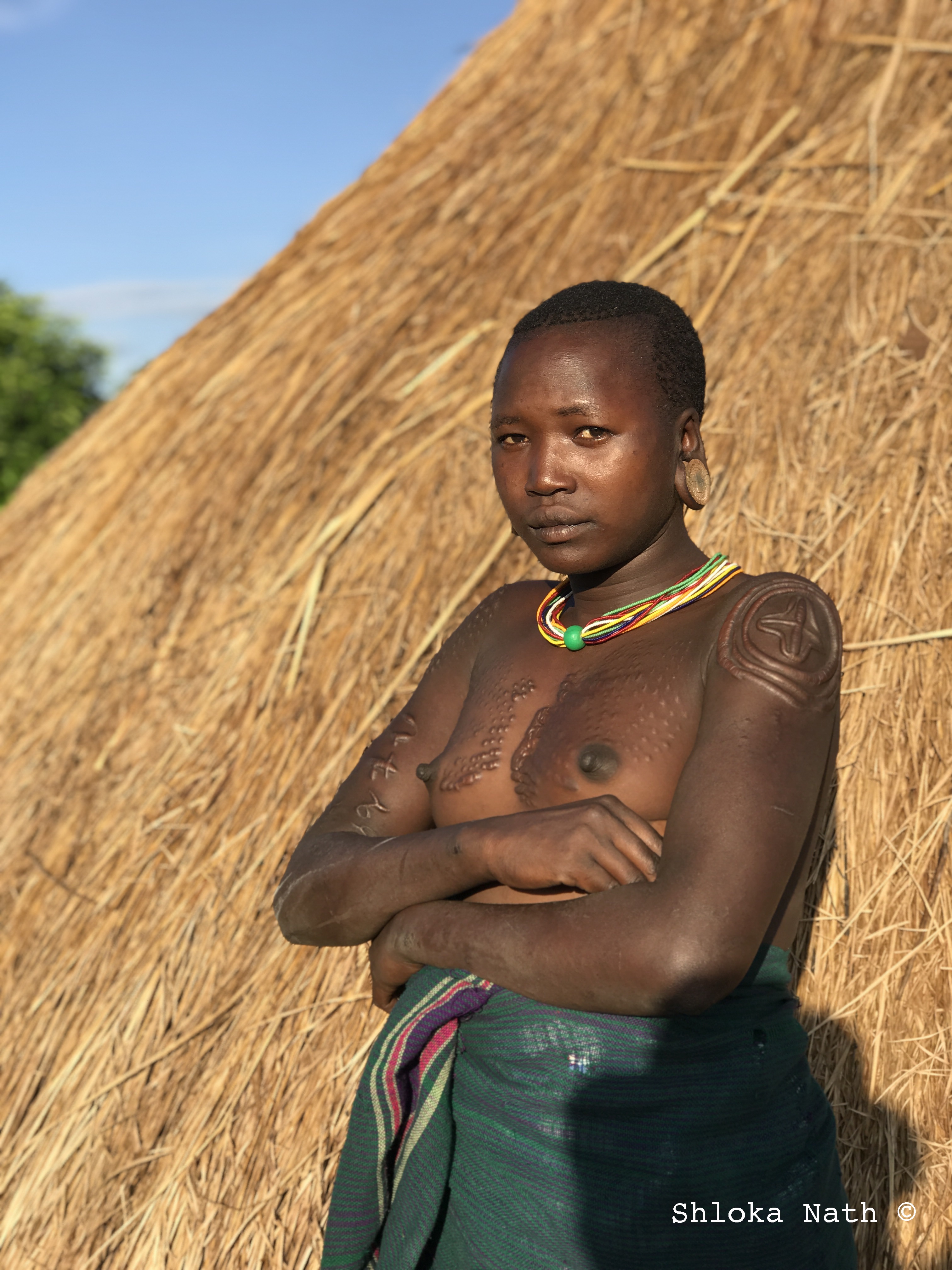
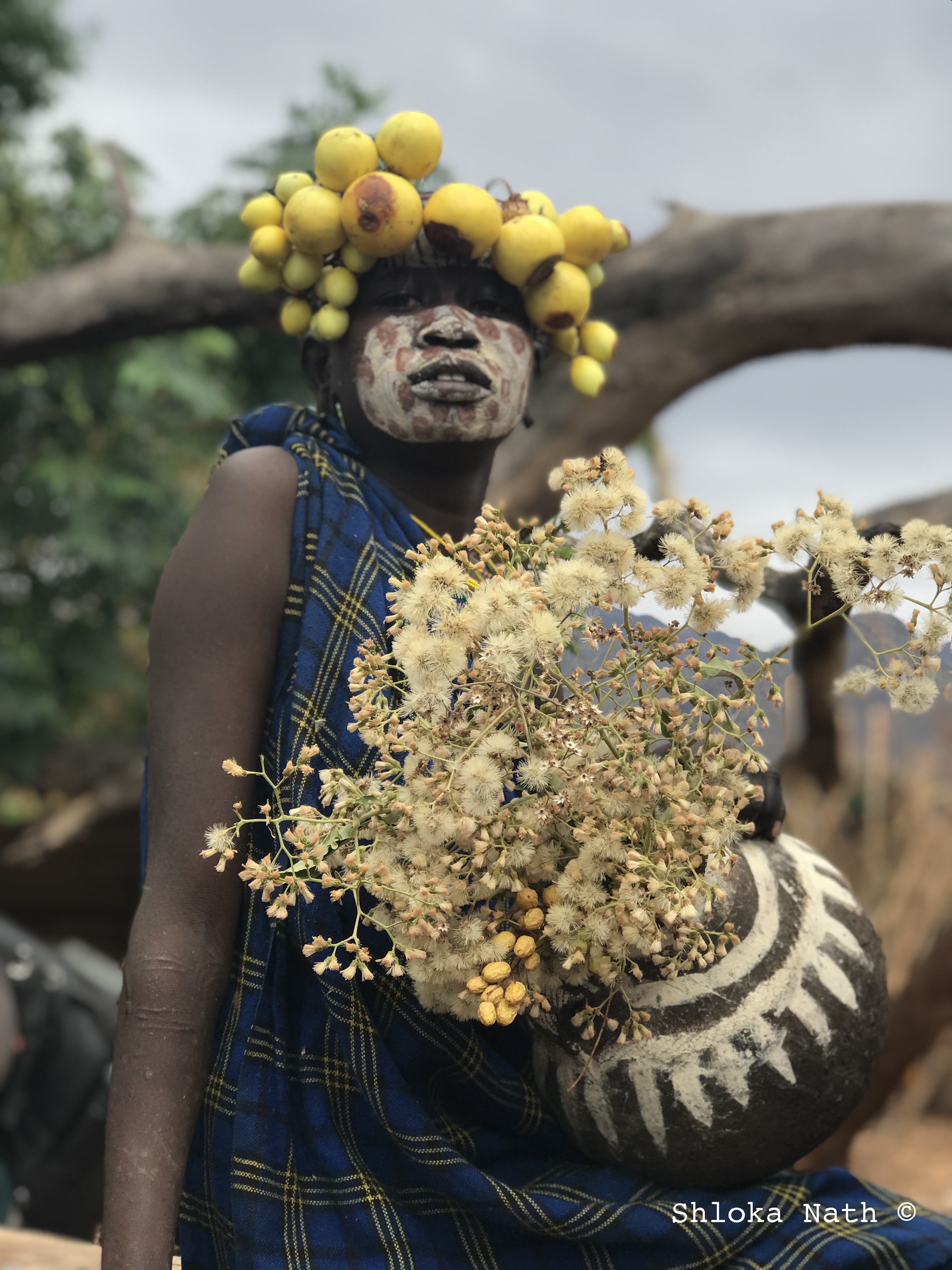
The Karo are expert body painters, who use river clays and locally available vegetable pigments. Hamar women wear their hair in dense ringlets smeared with mud and clarified butter and topped off with headdresses of aluminum. The men mould extravagant ochre mud caps.
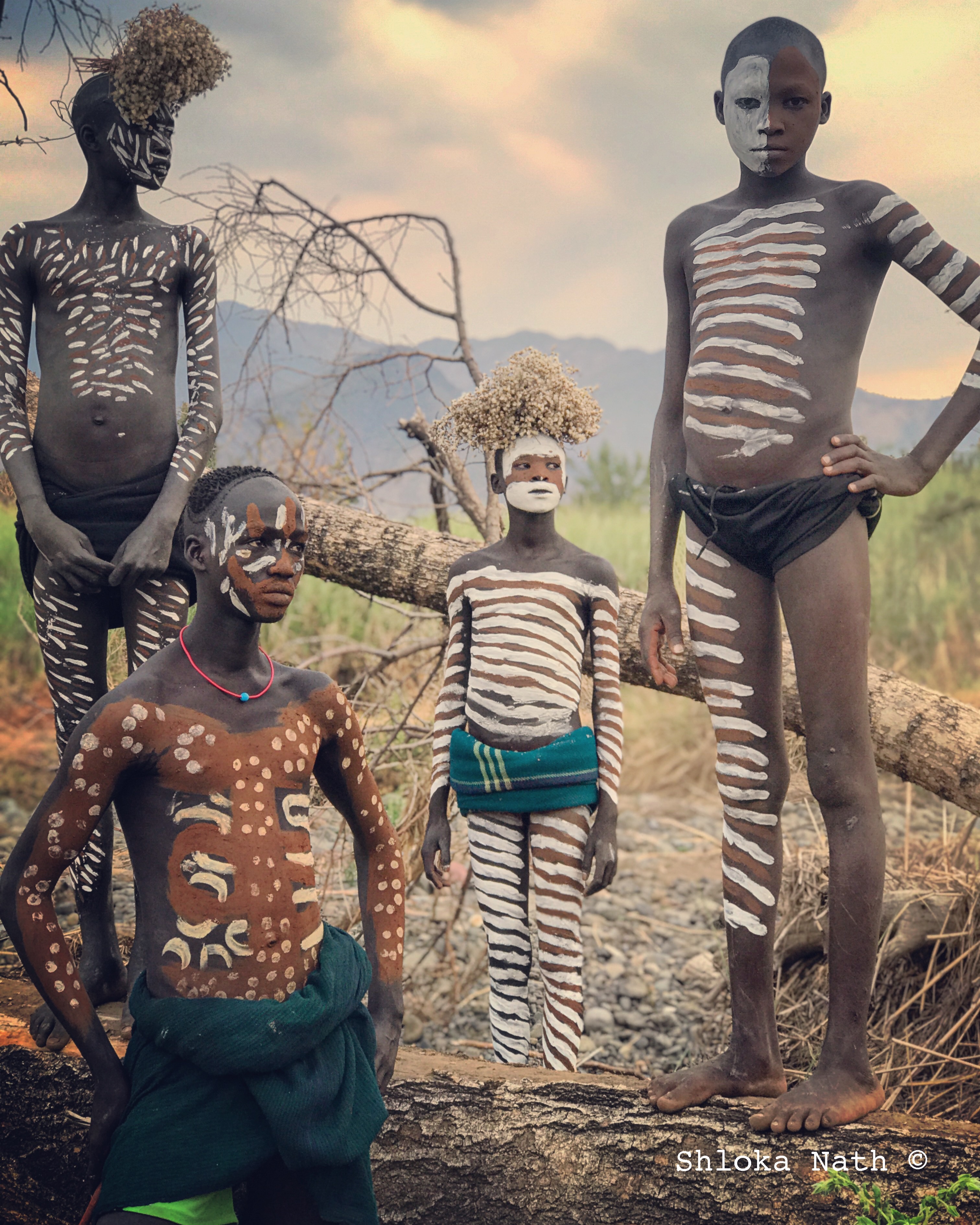
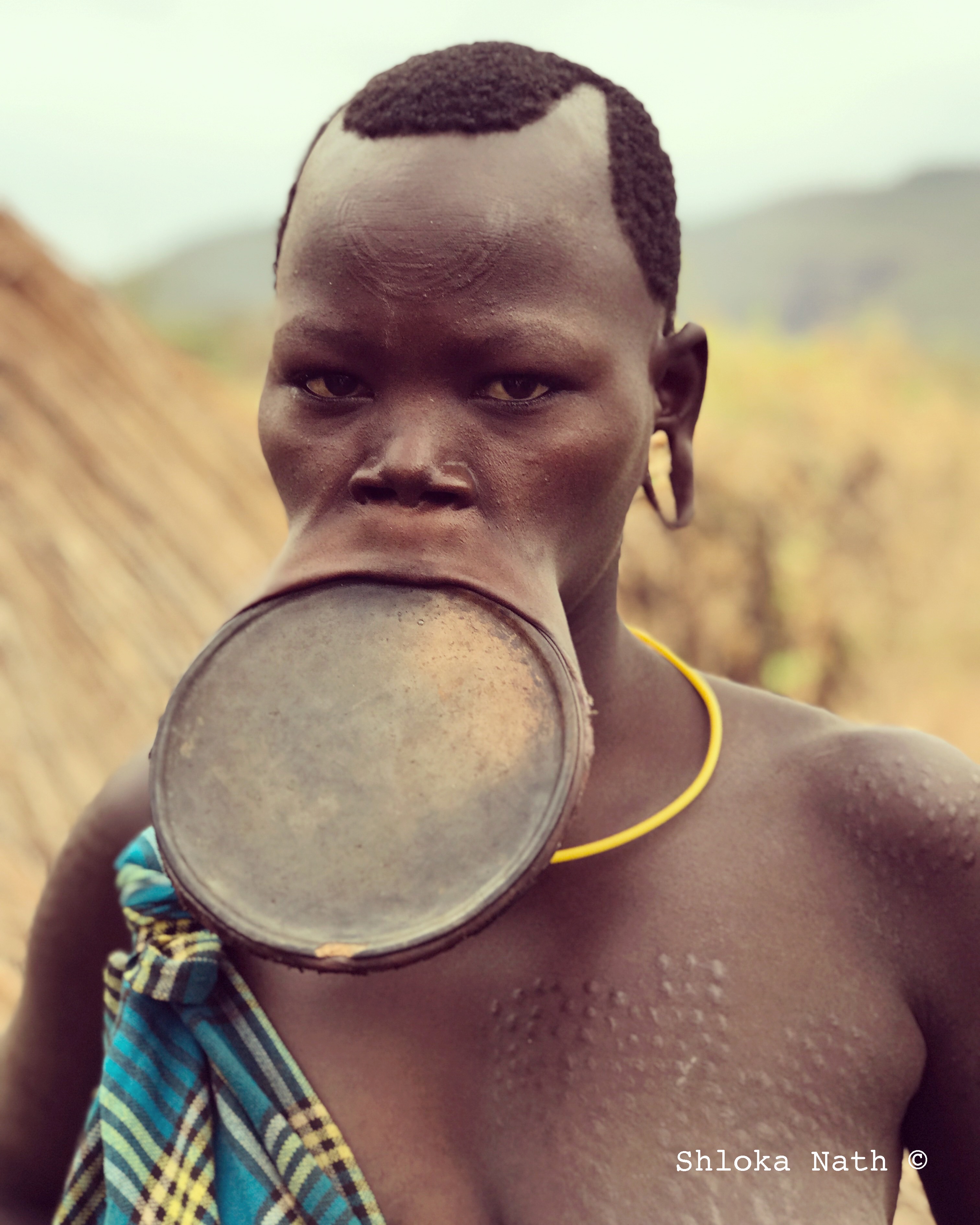
Pursuing a ritualistic art, linked with their idea of beauty, women of the tribe have distinctive clay plates inserted into holes in their bottom lips. The bottom two teeth are removed before the hole is cut to insert wooden discs. Each disc is gradually changed for a bigger one until the lip is stretched enough for a clay plate. The larger the plate, the more cows the girl's father can demand in dowry when his daughter marries.
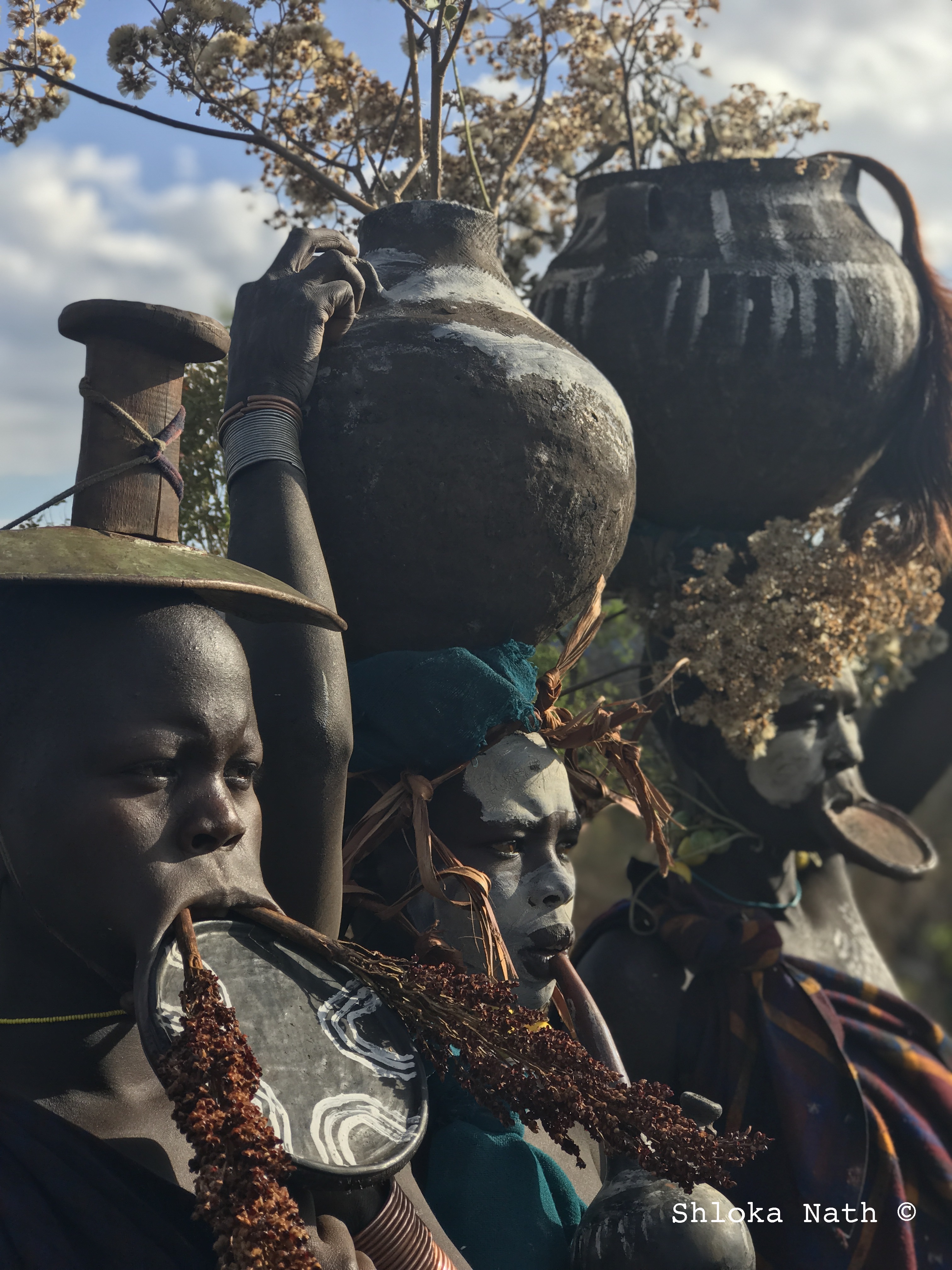
The art of a people is often the only thing about them that withstands the tyranny of the ages. Long after the wars are over, the elders have died and the children have become men, art remains. Art is what helps us make sense of the world around us, and our place in it. Art is how we tell our stories, where we came from and where we are going — the indelible, eternal expression of a people.
There is an image in my mind’s eye; of a group of Suri women, in the beautiful, soft, early morning light in Africa. They assemble like forest fairies and nymphs, flowers draped delicately across their breasts, sprigs adorning their hair, faces painted with ochre and white, streaked and dotted, fresh leaves and bark strewn across their shoulders, shoots and twigs between their teeth. They appear against the landscape like buds in springtime, woven into the forests around them, to the plains, the mountains that ascend behind.
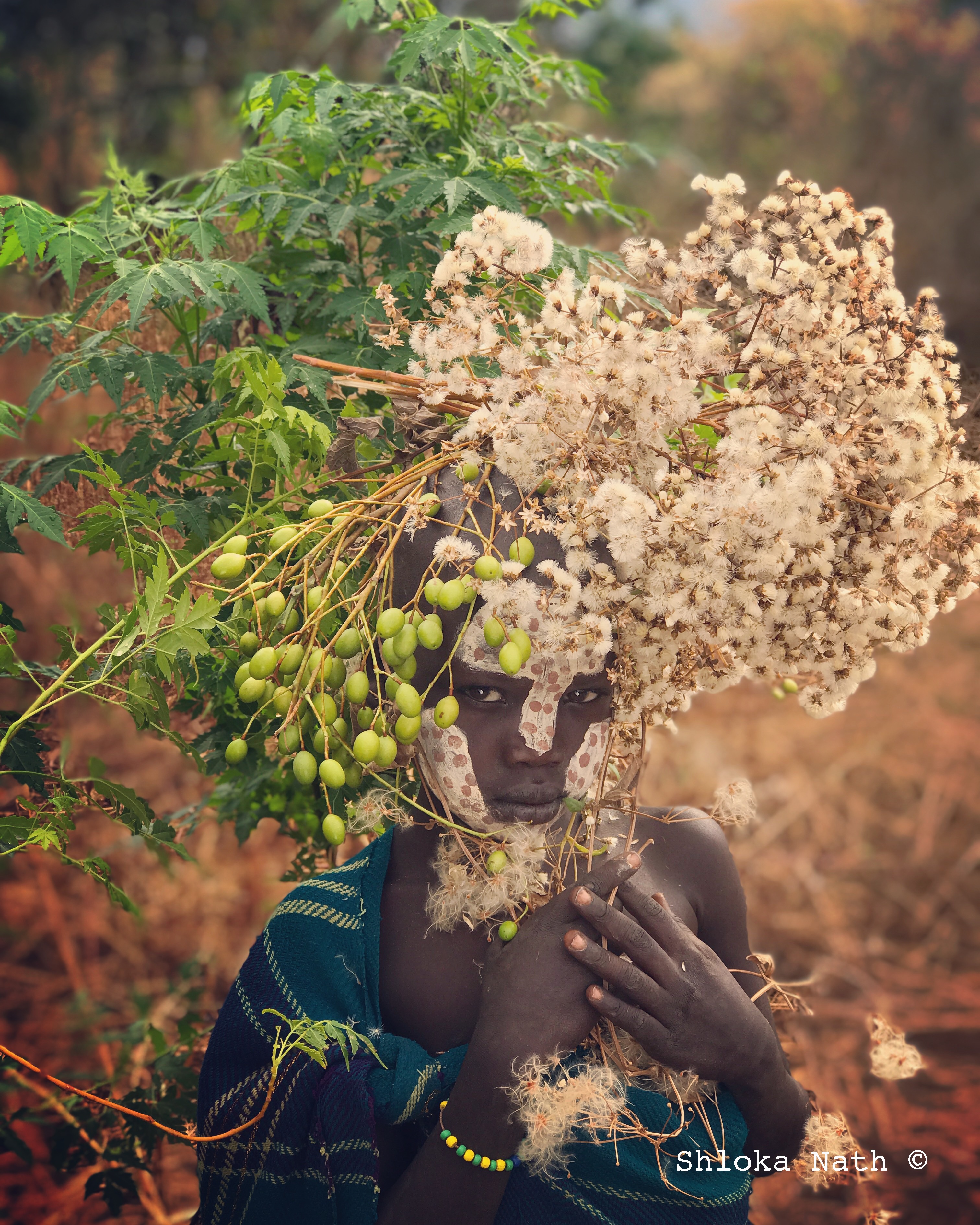
Genetic analysis suggests that “modern humans” first evolved by the Omo River, 195,000 years ago. Every person that has walked the earth since then can be traced back to a single tribe who lived here. Some of these descendants left the Horn of Africa during a period of climate change and migrated across the Bab-el-Mandeb Strait to Arabia and beyond, somewhere between 60,000 and 120,000 years ago. Their genetic imprints course through our veins as closely as their artistic imprints create prehistoric strokes on their bodies.
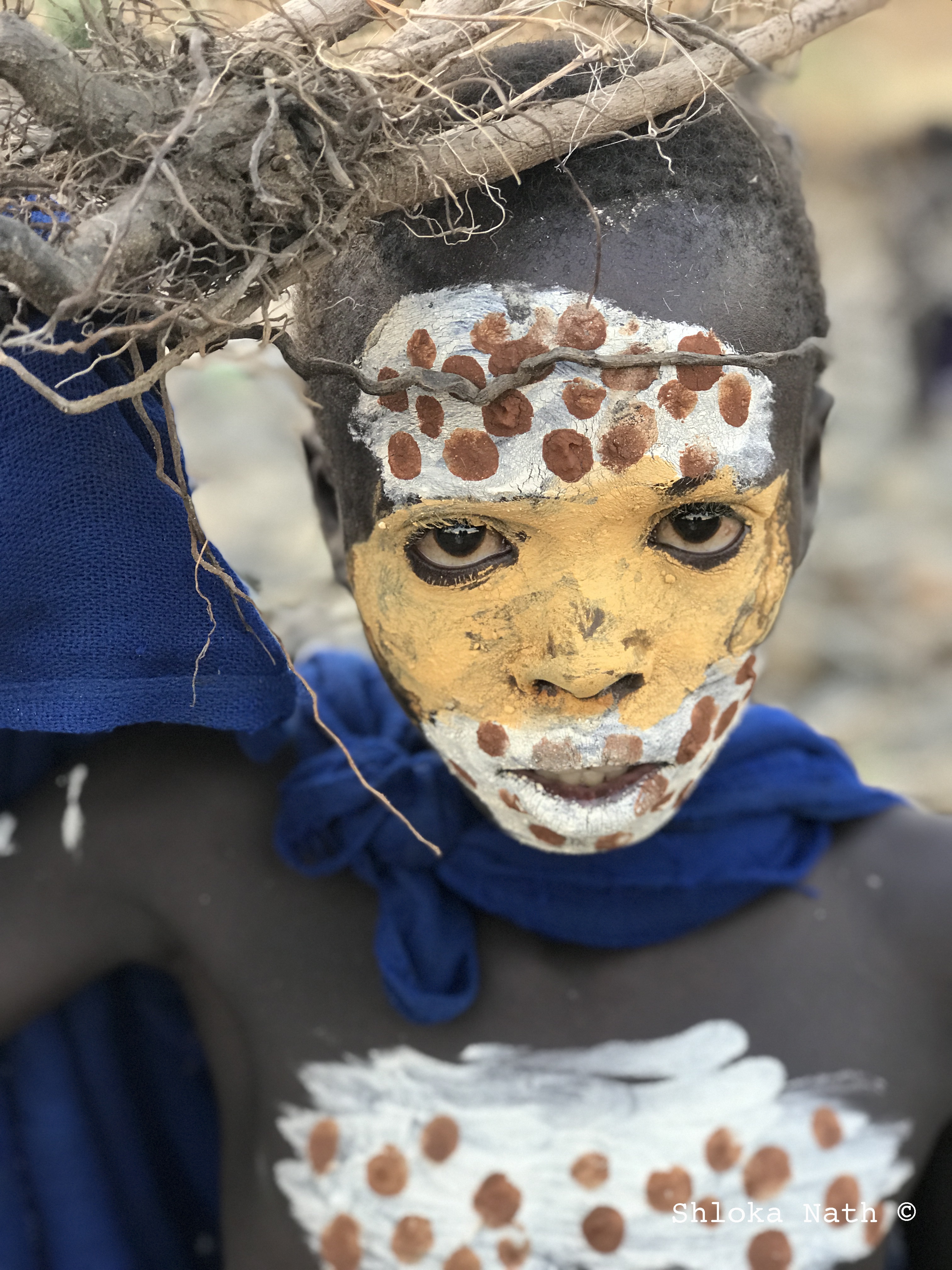
Today, the Omo is an “at-risk ecosystem”. Fatigue hangs in the heat. The savannas cry in thirst. The Ethiopian Government has recently completed the third of the five proposed dams upriver. The dams have curtailed the floods that feed the cultivations and the rich biodiversity. They have also affected the water levels of Lake Turkana, harming local fishing grounds. This has exacerbated inter-ethnic conflicts over access to water and grazing. Even worse, the government has leased large tracts of tribal land to foreign companies, to build sugar and cotton plantations. Many tribes are being resettled. Cell phone towers are under construction. Younger members no longer want to wear lip plates.
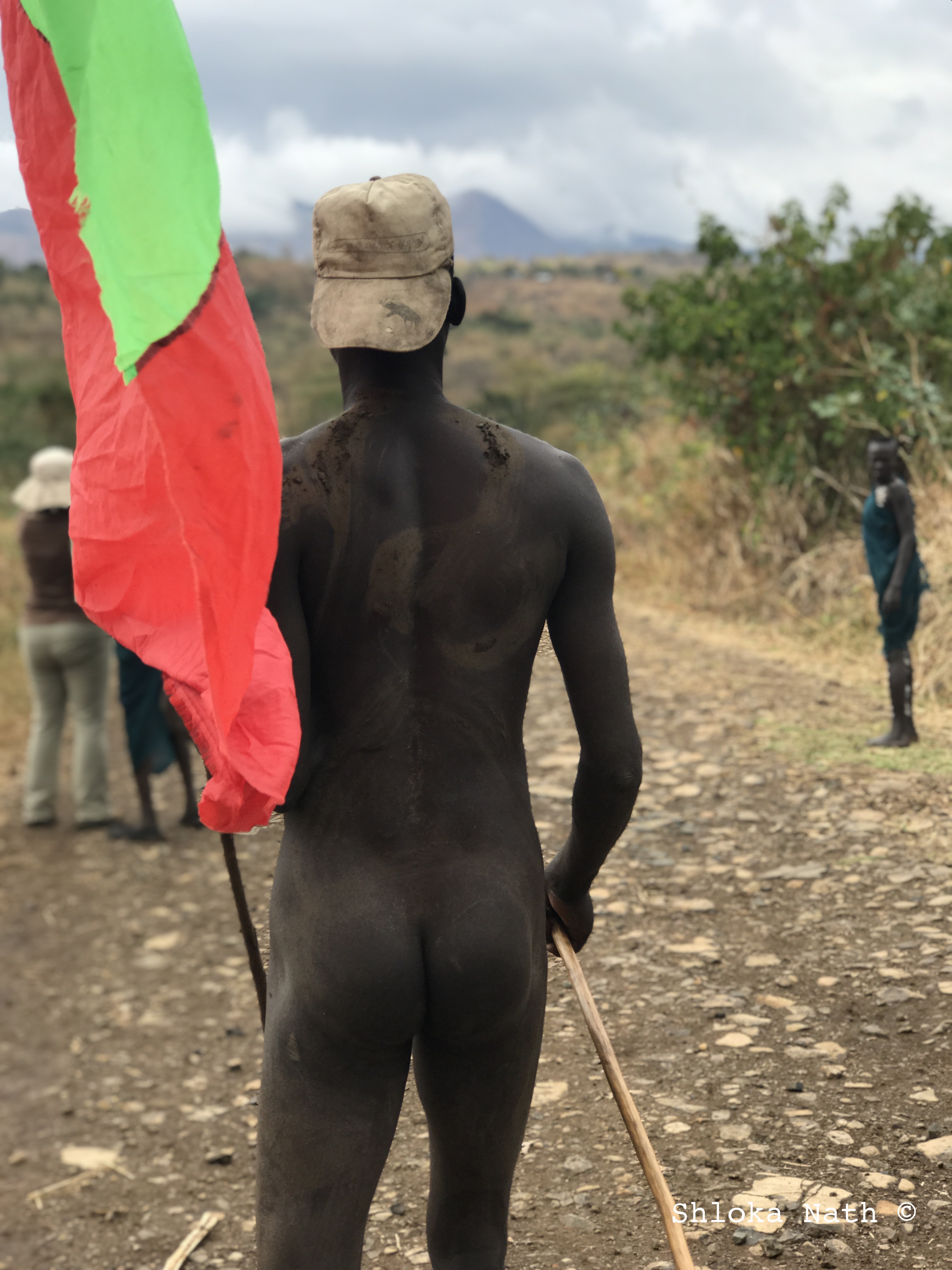
Each step of the way, I despair. Displacement of tribes for minerals in their land, resources in their forests and hydropower related to their water bodies is common worldwide. The sustainable principles of their life and their sacred love for nature is held in little value.
On my last evening, the sun was hazy near the horizon. I lay down and stretched my legs on the banks of Omo.
Progress is inevitable. It is the way of the world. But the world cannot be whole without the indigenous peoples who are the source of our lives and arts. Their ways question the systems of our universe, forces us to know ourselves deeper and our connections with the Earth better. They know and hence are more alive than the others.
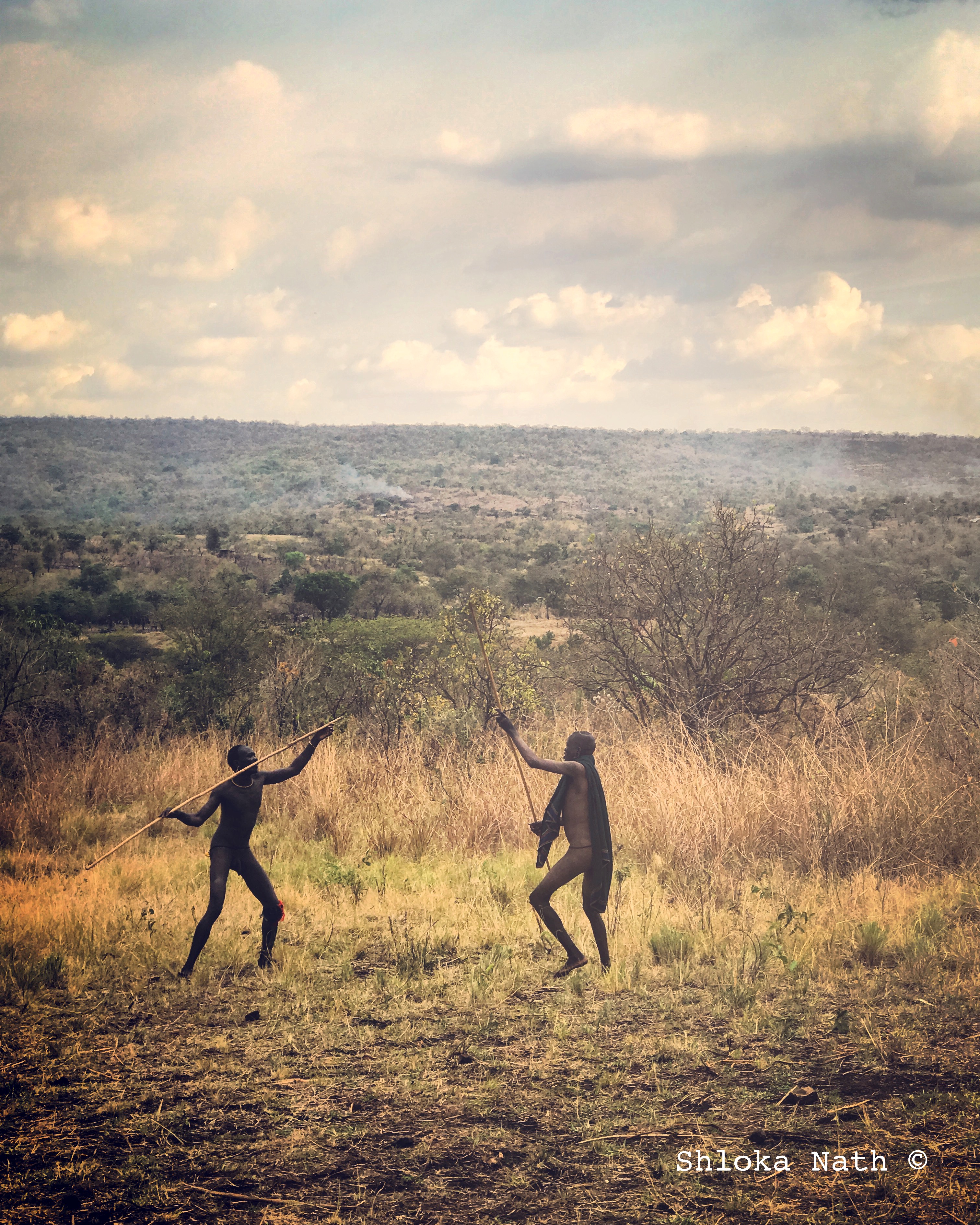
The Omo, they reveal more to us about humanity in their intrinsic quest for beauty, no matter how dire the circumstances, how persistent the dreams of horror, the memories of death, the nights of waiting or how bereft they are of possessions.
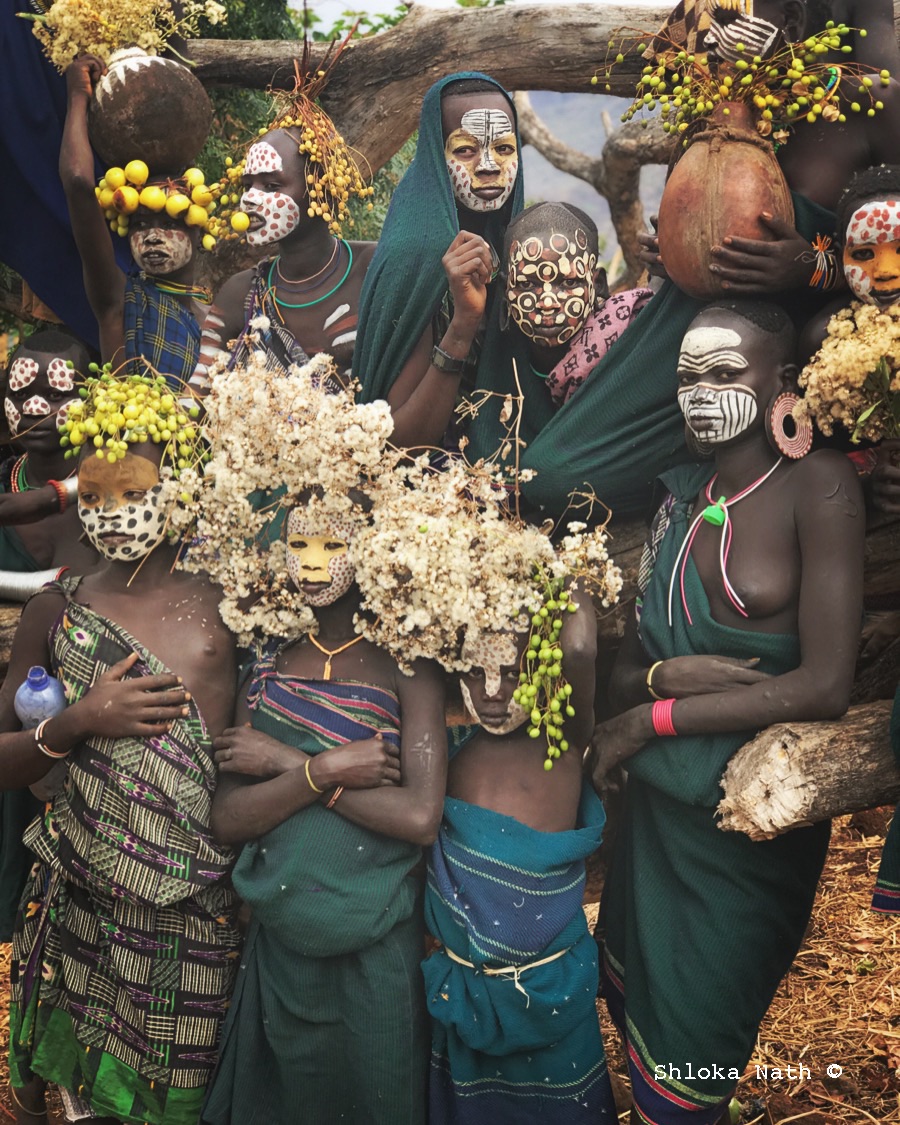
Shloka Nath is currently Head, Sustainability, at the Tata Trusts. In this role, Shloka leads the organization’s climate, energy and environment work, implementing and funding sustainable and scalable solutions that help both people and nature thrive through India. Prior to this, Shloka co-founded and was Managing Partner, Sankhya Women Impact Funds India’s first women’s investor funds that focused on early stage enterprises impacting women. She is also the author of a book on Wildlife in India.
Shloka is an angel investor in social enterprises and has mentored organisations across sectors. She has spent over a decade in print and broadcast journalism with the BBC in London, New Delhi Television, and Forbes with a special emphasis on sustainability and financial inclusion. In 2010, Shloka was nominated for India's highest awards in journalism for her reportage on microfinance in India.
In 2014, Shloka served as Campaign Manager for Meera Sanyal, the Aam Aadmi Party (AAP) Candidate for Mumbai (South), for India's General Elections.
Shloka has a Master in Public Policy from Harvard's Kennedy School of Government and a BSc in Government from The London School of Economics and Political Science.